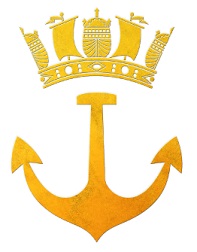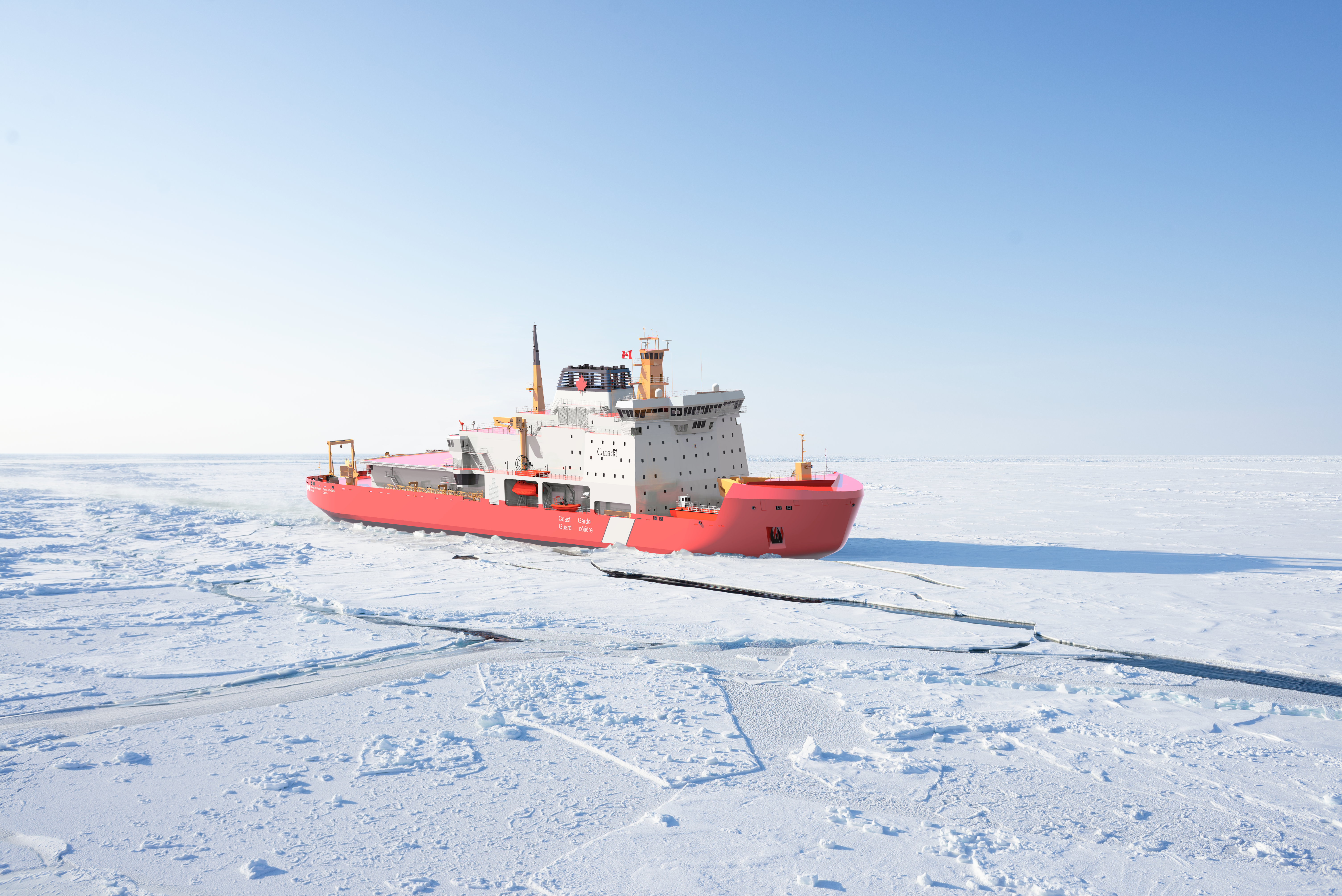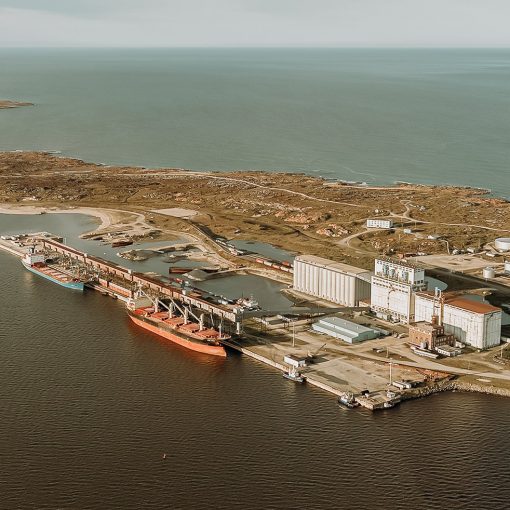By Rob Huebert, 12 November 2025
[This is an excerpt of an article in Vol. 21, No. 2 of Canadian Naval Review. For the full article, click on the link below.]
The Canadian Coast Guard (CCG) has traditionally been the neglected marine service within Canada.1 It plays an essential role for Canada in a vast area of maritime safety and security functions, and it is best known as one of the Canadian government’s most important means of providing stewardship over the Arctic – as evidenced by the appearance of the icebreaker CCGS Amundsen on Canada’s $50 bill. However, while the CCG plays such a crucial role for Canada, it remains underfunded and ignored by Canadian governments, forced to operate an aging fleet.
This is about to change with the long-promised fleet recapitalization finally occurring under the National Shipbuilding Strategy.2 Specific to the Arctic, the actual construction of two large Polar Class icebreakers began at Seaspan Shipyards in Vancouver on 3 April 2025 and at Helsinki Shipyard in Finland on 20 August 2025.3 In addition, on 8 August 2023, Irving Shipbuilding began the construction of one of the two Arctic and Offshore Patrol Vessels (AOPVs) that the CCG will receive. Such an explosion in the construction of vessels needed for operations in the Canadian Arctic would seemingly be only good news; however, unfortunately, while the ships are all needed, the manner and timing of their construction will create significant difficulties and inefficiencies in the future. The frustrating element of this is that the government of Canada fully understands what it is doing but is still proceeding in this manner.
The current urgency to act is based on the recognition of two core threats to Canadian Arctic security and sovereignty.4 The first is the long-term recognition of the impact of climate change. Specifically, the warming of the polar regions means that waterways that have been previously frozen and therefore inaccessible are now expected to be navigable as the ice melts, leading to increasing ship traffic. There is disagreement as to when this will occur and how the melting will take shape, but the political realization that it is occurring is now driving much of Canadian policy, as evidenced in both Our North Strong and Free and Canada’s Arctic Foreign Policy. The second major threat comes from the rapidly devolving international security environment. While many Arctic scholars had seen the Arctic as a region of exceptional peace and cooperation, events since the Russian invasion of Ukraine in 2014 have now led to circumstances in which the Arctic is increasingly recognized as a region of escalating tension.5 Unlike the Cold War era, when the two belligerents were the United States and its North American Treaty Organization (NATO) allies against the Soviet Union, the growing tension between the NATO alliance, the United States and Russia is compounded by an increasingly Arctic-oriented China. There is considerable debate as to the actual intentions of China and whether it poses a security threat as opposed to a political/economic threat, but there is little dispute that China’s involvement in the region is growing.
The net effect of the recognition that the Arctic waterways will become more navigable in the future, combined with the growing military tension in the region, has finally focused Canadian policy-makers’ attention on the need to respond to the requirements of the Canadian Coast Guard.
This has resulted in the current building of a new fleet of icebreakers. Once the new ships are constructed, they will fill a growing deficit in Canada’s Arctic capabilities, and the CCG will make excellent use of the vessels. But the way they have been built underlines the unwillingness and inability of Canadian governments to manage the country’s Arctic assets rationally, and especially those the CCG needs. Canadian governments may say they prioritize the protection of Canadian Arctic sovereignty and security, but the way the CCG Arctic fleet is being rebuilt demonstrates that this is not the case. Governments also say they understand the problems that a boom-and-bust building cycle creates,6 but the construction of the two polar icebreakers and two AOPVs at the same time and in different shipyards demonstrates that they either do not know how to solve the problem or really do not care to do so.
…..
To read the rest of the article, go to https://www.navalreview.ca/wp-content/uploads/public/vol21num2/cnr_vol21_2_Huebert.pdf
Image: A graphic of the Polar Icebreaker posted by Seaspan on Twitter, 31 January 2023.






One thought on “The Cost of Success: Rebuilding the Coast Guard’s Arctic Capabilities”
It is not clear to me that a boom and bust cycle is actually occurring. There seems to be an assumption that all these ships will be built quickly, simply because orders have been announced. However Seaspan is scheduled to build the lion’s share of the vessels; 16 multi-purpose vessels, 1 polar icebreaker, and two joint support ships remain to be produced. In 10 years of work they have completed, as of yesterday, four large ships. They will complete the two JSS in the next couple of years, and the polar icebreaker by 2030 if there are no delays. Deliveries of the multi-purpose vessels are likely to begin only after that, and there is no reason to think they can deliver more than one ship per year. So orders already announced seem likely to keep that shipyard busy until 2045.